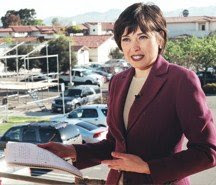One of the biggest complaints I hear from public relations professionals is, "How do we get in on the action when the media get focused on one subject?" Pulling a pack of journalists from a big story is like pulling a pack of wolves from fresh prey. The trick is to tie your issue into whatever they are already drooling over.
For example, Denver is a big sports town. When John Elway was quarterback of the Denver Broncos , the city had “Broncos Fever.” And in the middle of a Colorado winter, no one seemed interested in the ski resorts. My sources unsuccessfully pitched me stories. Finally I said, “If it doesn't have something to do with the Broncos, it won’t get on the air.”
A few days later my PR friend called me back: A local artist was carving an image of a Bronco out of an eight-foot-tall block of ice. We did an entire piece on a chunk of ice. Silly, I know. But the ski resort got its mention and we got on the air.
As simple as this example seems, it is entirely relevant. In editorial meetings across the country journalists try to “localize” big stories. Thousands of them sign up for the Poynter Institute's Al’s Morning Meeting, an online column of story ideas for journalists. It helps reporters navigate national and international issues and it suggests how to cover those stories on a local level.
For the past several days, the media have focused on the situation in Iran. Recently CBS4News localized the story by covering an Iranian student at the University of Denver using social networking sites to connect with family in Tehran.
Find out what reporters are already thinking and talking about. Then join -- and try to influence -- the conversation.
Tip: CBS4 Morning News Executive Producer, Duncan Shaw, suggests following and contributing to editorial meetings on Twitter. He says, "If the producers and editors are talking about doing a story on real estate, the PR professional should tweet that they’ve 'got just the agent for you to talk to…'
Thursday, June 18, 2009
Subscribe to:
Posts (Atom)
